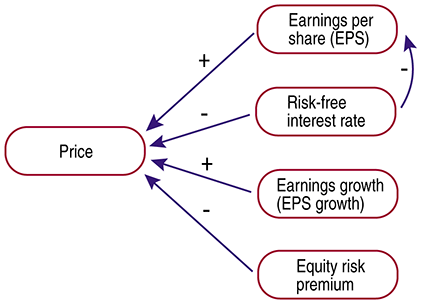
FIGURE 1: RELATIONSHIPS BETWEEN PRICE AND ALTERNATIVE FACTORS. The risk-free interest rate has a direct impact on the price but also an indirect impact through earnings per share (EPS).
QUANTITATIVE ANALYSIS
More Gems Amid The Rubble
Why do stock prices move?
In a S&C December 2009 article titled “Gems Among The Talus,” Thomas Maskell outlined three reasons for stock price moves: growth, earnings, and money flow. He also discussed how those factors might be analyzed using technical analysis.
This article continues to explore that avenue of thought and presents another way of thinking about the causes of stock price moves, and also offers four reasons why stock prices move.
Why and what?
Taking a cue from Maskell’s work, we decided to use a valuation model of stocks to provide a solid base to the analysis. We use the model first presented in S&C in May 2001 and later further developed by Luoma and Petri Sahlström elsewhere. Here are four ways that stock price moves are affected:
The first is earnings per share (EPS). A stock acquires value through its ability to make money for its holders in the present and a promise to do so in the future. Thus, the higher the EPS is, the higher the stock price goes. Future expectations also affect stock prices: for example, the growth rate of the EPS predicts the size. In practice, rapidly growing companies reflect rapidly increasing EPS. This is why earnings growth is second on our list of reasons for stock price moves.

FIGURE 1: RELATIONSHIPS BETWEEN PRICE AND ALTERNATIVE FACTORS. The risk-free interest rate has a direct impact on the price but also an indirect impact through earnings per share (EPS).